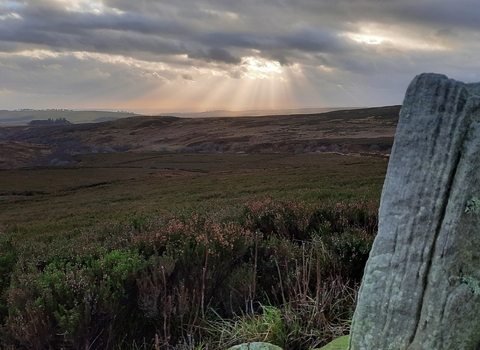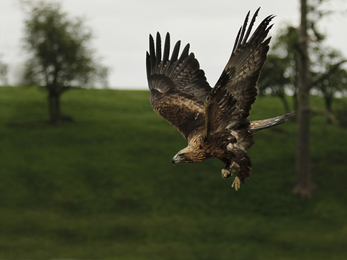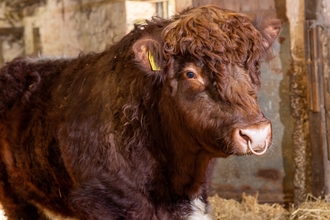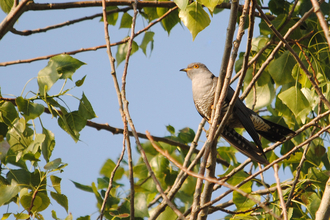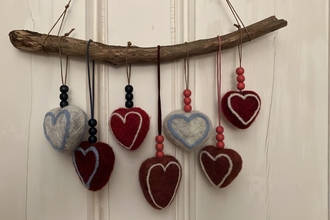Why is The Rothbury Estate so special?
The Rothbury Estate covers over 3,800 hectares in the heart of Northumberland. It is a breathtaking place, with sweeping landscapes and starlit skies.
The Simonside Hills are famed for their rugged beauty and offer spectacular views across the Coquet Valley and all the way to the North Sea. The mighty Whin Sill - a sheet of dolerite rock formed 295 million years ago, when molten rock rose up from deep within the Earth - together with the exposed upland moors, gives this landscape its distinctive character.
The Estate has been in the ownership of the Percy family – the Dukes of Northumberland – for almost eight centuries. It is an extraordinary place, where nature and human history are interwoven. We now have an unexpected opportunity bring the entire Estate into The Wildlife Trusts’ ownership for the benefit of people and wildlife.
Nature
Some of our rarest wildlife depends on this land. The Estate’s dramatic uplands are home to curlews, snipe and lapwings, and its woodlands provide a refuge for red squirrels, endangered in Great Britain.
In spring, Simonside is alive with the sound of skylarks singing high in the air as they mark out their territories and try to attract a mate. In summer, flowers such as harebell, wild thyme, devil's-bit scabious, maiden pink, rockrose and mountain pansy bring colour to the grasslands. Salmon and critically endangered eels swim in the Estate’s rivers and its riverside woodlands support rare summer breeding birds such as wood warbler, redstart and pied flycatcher.
The Estate already provides a home for special wildlife like the cuckoo and merlin – the UK’s smallest falcon. In the future, we could see secretive pine martens moving softly through the forests and majestic golden eagles soaring above the iconic Simonside Hills.
History
The Rothbury Estate is a world-class historic landscape. The deep connection between people and this landscape is visible in prehistoric burial cairns, the ancient Simonside cup and ring-marked rocks, Bronze Age burial mounds, the Iron Age hill fort and medieval field systems.
Grade II listed pill boxes and milestones sit alongside traditional farm buildings built in the local vernacular style using local sandstone, along with reminders of the recent industrial past such as miners’ cottages and a disused railway line. The remains of the medieval deer park wall provides one of the few standing clues to the human activity from this period, owing to the warfare of the time.
The ruins of a 16th or 17th century bastle – a fortified farmstead – tells of a borderland for centuries at constant risk from violence and military action between kingdoms.
We believe the area is likely to contain an even richer archaeological heritage which has not yet been recorded. Once we secure the Estate in The Wildlife Trusts’ ownership, we can bring in experts to investigate and reveal its secrets.
Connection
Our vision is of a 40-mile nature corridor across Northern England, stretching from Druridge Bay in the east to the Scottish-English Border at Kielderhead and Whitelee National Nature Reserves, with The Rothbury Estate at its heart.
The Estate is located among a network of sites that includes land managed by Northumberland Wildlife Trust, the National Trust and Hepple Wilds, among others, and is connected to the coast by the River Coquet. This connected network of habitats is vital to allow wildlife to move through the landscape.
The Rothbury Estate is a vital part of this vision – it could form the lynchpin of a 40-mile nature corridor. There are very few places in England right now with the opportunity to create a connected landscape for nature on such a large scale.
Key

Wildlife Trust project
The future of The Rothbury Estate
With the communities who live and work on and around the Estate, we will develop a vision for the future management of this remarkable landscape. With nature-friendly, regenerative farming, we will place nature’s recovery at the heart of the Estate, while respecting the rural traditions of this region.
We will show how nature, community and the rural economy can work together, with people and wildlife thriving side-by-side. We will enhance public access so that more people, locally and from across the UK, can explore and learn about the history of the area and the wonderful wildlife found here.
We must keep this exceptional, iconic landscape intact, to preserve its rich history and precious wildlife for future generations and avoid it being broken into multiple ownerships. If we don’t act now, we will lose the opportunity to safeguard this landscape, which has meant so much to people for thousands of years.
Donate to secure Rothbury Estate
The story so far
The Rothbury Estate, in the heart of Northumberland, is the largest land sale in England in 30 years. When the Estate came on to the market, we knew we had to save it. Thanks to donations and philanthropic loans, we were able to bring part of the Estate – including the wonderful Simonside Hills – into Wildlife Trust ownership in late 2024. We must now secure the entire Estate, to save it from being broken up into multiple ownerships.
We have a once-in-a-generation opportunity to secure this historic estate and develop it into one of the most important sites for nature in the UK.
If we can’t buy the rest of the Estate, it will go back on the market and will likely be split into multiple ownerships for a range of commercial opportunities. We risk losing the opportunity to create a connected landscape which supports some of the country’s rarest species to thrive, and where people can connect with nature and with a cultural heritage going back thousands of years. A vital missing piece – the lynchpin of a potential 40-mile wildlife corridor - will be lost.
Any donation is gratefully received – together we can save this unique place for nature and future generations.
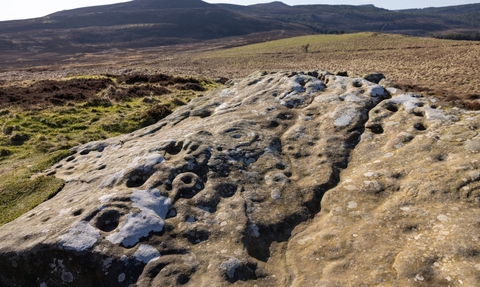
Ancient rock carving at Lordenshaws © John Millard

